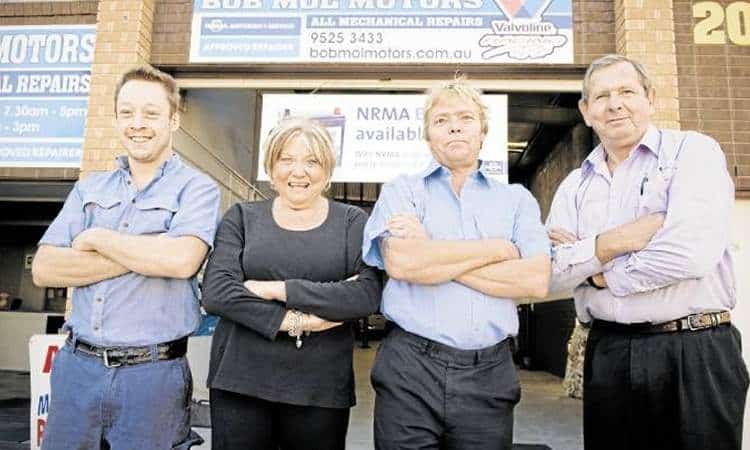Holden Captiva family SUV carved a niche but there are pitfalls.
HOLDEN’S Captiva SUV sold well but has a poor reputation. Australians bought more than 10,000 a year but there can be costly problems.
FOR something that sold so well, Holden’s Captiva SUV has a poor reputation. Australians bought more than 10,000 examples of five or seven-seater each year but reliability problems — specifically such big-ticket items as gearboxes and engines failing — earned the nickname “Craptiva” from online forums.
It’s a shame that the Captiva’s rather good successor, the Equinox, isn’t selling in anything like as many numbers for Holden today.
So are used Captivas worth considering? There are plenty of satisfied owners, as the model carved a niche as a sharply priced family SUV with decent specification.
It packs a five-star safety rating and roomy interior. It handles well enough and the diesel engine has strong pulling power.
On the minus side of the ledger, the Captiva was built by GM Korea, formerly known as Daewoo — hardly a brand Australians associate with engineering excellence.
The model arrived in 2006 as the Captiva 5 or Captiva 7, the number signifying seating capacity. These earlier models suffered more reliability dramas, so we’ll concentrate on the Series II models of 2011-17.
Even for these, there’s strong buyer beware advice. Owners of these Captivas have reported numerous problems, with plenty of instances of replaced transmissions, new engines, oil leaks, failed turbos and dodgy electrics, none of them cheap to fix out of warranty.
Launched in March 2011, the Series II seven-seat version was slightly longer and taller than the five-seater. All versions were available with front or all-wheel drive and towing capacity was 1500kg-2000kg
The six-speed manual gearbox came solely with the front-drive five-seater. The rest had the seemingly brittle six-speed auto.
In SX grade (front-drive whether in 5 or 7), power came from a 2.4-litre four-cylinder. The CX and LX (AWD) used the rather thirsty Aussie-built 3.0-litre V6 borrowed from the Commodore. A more economical 2.2-litre turbo diesel was optional on all.
Decent specification for the price had buyers flocking. All scored six airbags, electric park brake, descent control, alloy wheels (17 to 19-inch) and fog lamps. Captiva 7s also had Bluetooth and cruise control.
The mid-spec CX added rear park assist, climate control and driver info display.
Range-topping LX versions had seven-inch touchscreen, satnav, rear camera, leather trim and USB port.
In July 2012 Holden improved fuel efficiency on all engines, while also adding rear park assist to Captiva 7 SX and heated front seats and front park assist to the LX.
April 2013 brought a new generation six-speed auto transmission. The new Captiva 5 LTZ range topper had leather trim, heated electric seats and 19-inch alloys and the entry-level car was called Captiva 5 LT.
If you look at 2014 Captivas it gets a bit confusing. Holden slashed prices of its SUV and renamed the Captiva 7 trim levels LS, LT and LTZ while showing off a facelift, new alloys and a smart key and start feature.
Look out for 2015 Captiva 7 LS-based Active special editions, with 18-inch rims, leather seats, sunroof and roof-rails.
A final facelift with daytime running lights arrived in early 2016, and the SUV simply became “Captiva” with five or seven seats.
These models are worth seeking out for the inclusion of desirable Apple CarPlay/Android Auto connectivity, rear camera and smart active safety in the range-topper.
The Captiva seven-seater is still on sale, the five-seater making way for the far more advanced Equinox SUV.
WHAT TO LOOK FOR
With many owner reports of replacement transmissions or engines — sometimes under warranty, sometimes at own vast expense — used buyers must be incredibly diligent.
If the transmission makes odd noises, struggles to change gear, can’t get into reverse, shudders or flares — lots of engine noise but no increase in the car’s speed — walk away.
There are reports of oil leaks from engines, so check underneath for the offending black stuff. Check there’s no oil in the radiator, or coolant/white gunk under the oil filler cap, the precursor to an expensive engine repair bill.
Ensure all the dash lights go out — and if the engine or transmission light stays on, make your exit. Same if the engine sounds rough or clunky, or stalls for no reason.
Electrics and the touchscreen also have been flagged as potential problems, so go over everything thoroughly.
Have a long test drive and check the fuel consumption, especially on petrol models where there are reports of drinking problems.
Captiva diesels need timing belts replaced every 90,000km. Check this has been done, or prepare for a big bill coming.
Check on productsafety.gov.au to ensure any Series II example you’re considering has had the appropriate recall work done.
THE EXPERTS SAY
Holden’s aggressive move to undercut Ford’s Territory and other rivals with reduced pricing, added equipment and revised engine line-up helped the Captiva tally almost 100,000 sales. The peak year was 2013, with a little more than 20,000.
In used listings, more than 95 per cent are automatics and the dearer AWDs account for more than six out of 10. Earlier LX seven-seaters are the most common variant listed and the newer LTZ versions, though few, sell sooner.
The base 2011 Captiva 5 with 2.4-litre and manual ($27,990 new) is just $8700. That year’s Captiva 7 LX diesel automatic AWD ($43,490 new) is now $16,500.
Last year’s LS four-cylinder manual ($26,490 new) is now worth $21,350 and the range-topping LTZ diesel auto AWD ($41,490 new) is $33,200.
Rivals include Mazda CX-5 for the five-seater and Toyota Prado, Ford Territory and Jeep Grand Cherokee for the seven-seaters. Of those, only the Territory has depreciated faster. However, the Captiva trails the best-in-class Prado by a significant margin and the Cherokee to a lesser extent. — Red Book
HOLDEN CAPTIVA 2011-17



